Are marine protected areas (MPAs) really as beneficial as we think? Mongabay gets to the truth with their examination of the effectiveness of marine protections.

Countries are now frenziedly creating more marine protected areas, increasingly very large ones, either out of genuine concern for marine life or to meet international targets. In the midst of it all, the efficacy of this conservation tool remains heavily debated. Is establishing marine parks better for species and habitats than leaving areas unprotected? Do marine parks improve fisheries and the well-being of fisheriesdependent communities?
This lack of baseline data, long-time-scale information and good control sites can be a major roadblock to teasing out the effects of an MPA from other rival factors: Were the changes in fish populations caused by the creation of the MPA or by other ocean conditions, fishing pressure or the park’s location? Of the studies Mongabay reviewed, for instance, only three studies accounted for multiple alternative explanations.
“Not enough thought is given to the monitoring design when [a] marine park is being established,” David Gill, a marine researcher at George Mason University and visiting scholar at the NGO Conservation International, told Mongabay. “The gold standard would be to conduct surveys both inside the marine protected area before it is established and in comparable unprotected sites, and then continuously monitor both sets of conditions over time to see if the changes are just because of the marine protected area, or something else.”
But achieving this gold standard is tricky, Gabby Ahmadia, a marine biologist with the World Wide Fund for Nature (WWF), told Mongabay.
This story is from the Issue 02 - 2018(112) edition of Scuba Diver.
Start your 7-day Magzter GOLD free trial to access thousands of curated premium stories, and 8,500+ magazines and newspapers.
Already a subscriber ? Sign In
This story is from the Issue 02 - 2018(112) edition of Scuba Diver.
Start your 7-day Magzter GOLD free trial to access thousands of curated premium stories, and 8,500+ magazines and newspapers.
Already a subscriber? Sign In
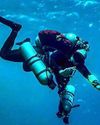
The Making Of A World Record-Breaking Diver
Descending more than 300 metres into the depths of the ocean may sound like a daunting prospect to even the most seasoned diver. But to one man, it was just another a challenge that he set for himself to see how far he was able to push the envelope.

Risk Mitigation: Hose Failure
An unexpected outcome
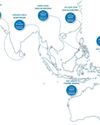
Top 10 Wrecks Of Asia-Pacific
We present a curated list of the top 10 most famous wrecks found in the Asia-Pacific region, listed in no particular order
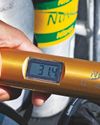
From The Medical Line: Diving After DCS
DAN medical information specaialists and researchers answer your dive medicine questions

Cave Exploration: Beginning With The End In Mind
Building complex adventures on simple skills
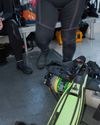
Dive Slate: Stay Safe On Board
When preparing for a dive, safety is at the top of the list – checking gear, learning potential site hazards and discussing procedures with your divemaster or buddy.

101 Tips On Becoming A Better Tek Diver
Technical diving takes divers beyond the typical recreational scuba diving limits, opening up many new and exciting possibilities.
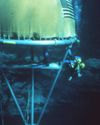
TECHNICAL DIVING TIMELINE (1660–1999)
It’s fair to say that the emergence of “technical diving” in the late 1980s, that is, the introduction of mixed gas technology, and later mixed gas rebreathers to the sport diving community, represented the culmination of hundreds of years of scientific discovery and technological development.

FLYING AFTER DIVING
From the Safety Stop

DIAGNOSING DECOMPRESSION ILLNESS
Incident Insight